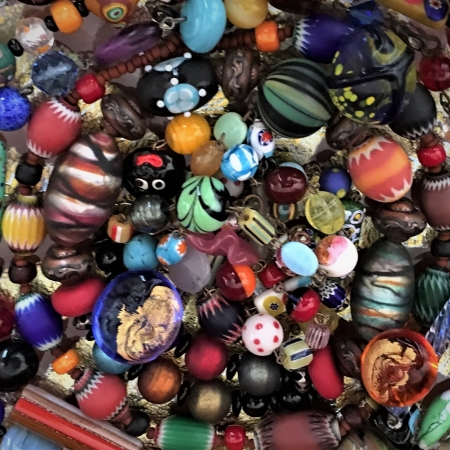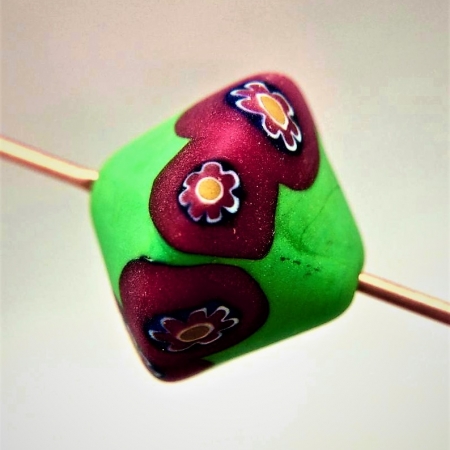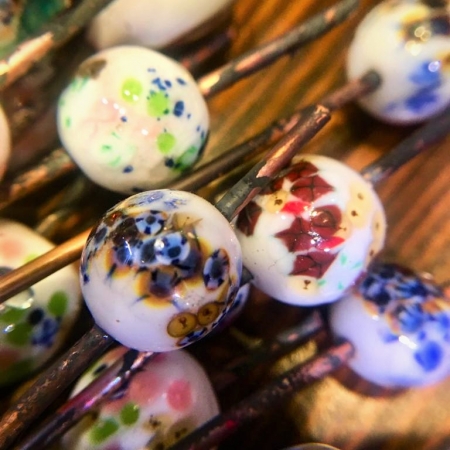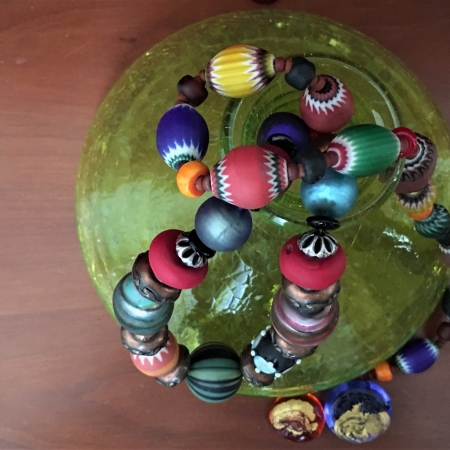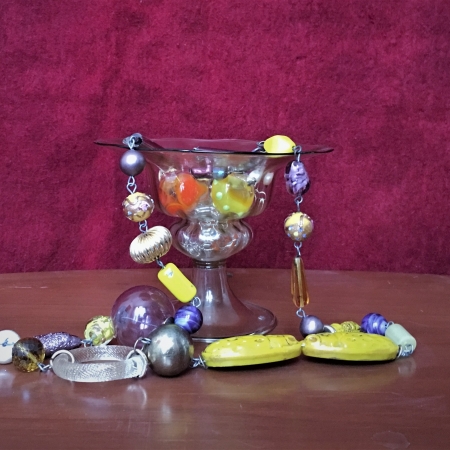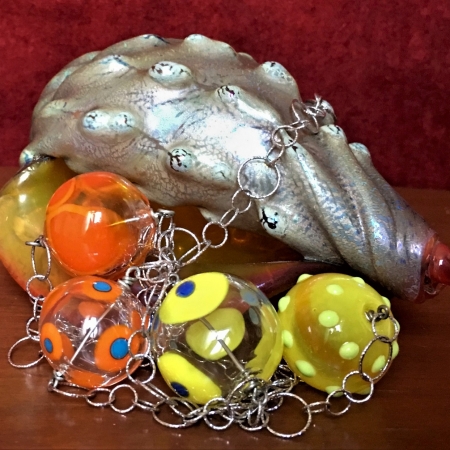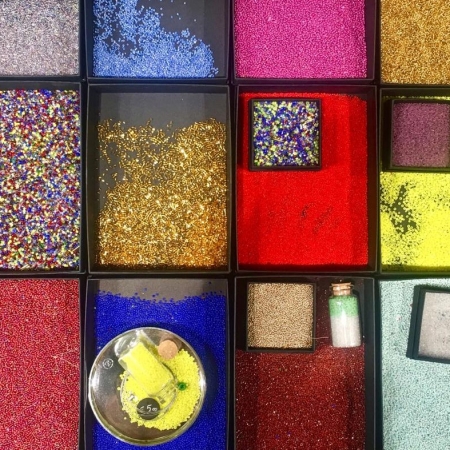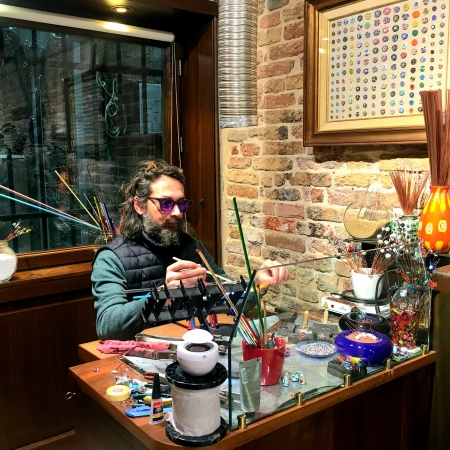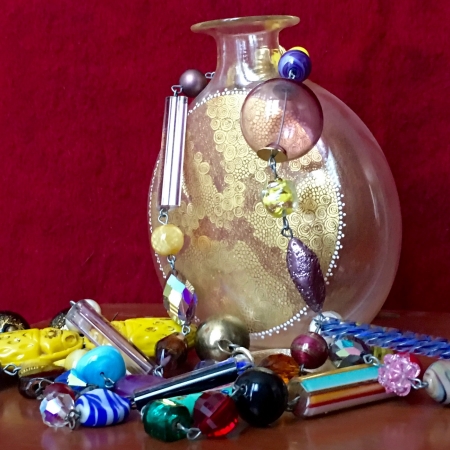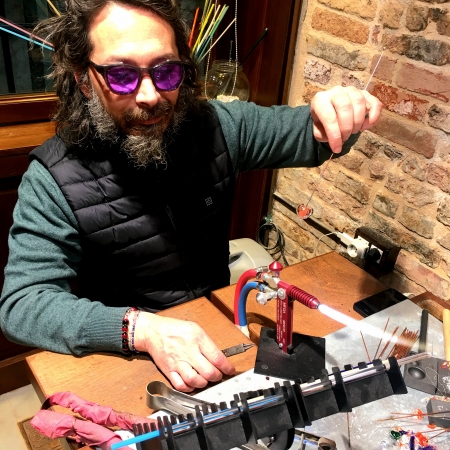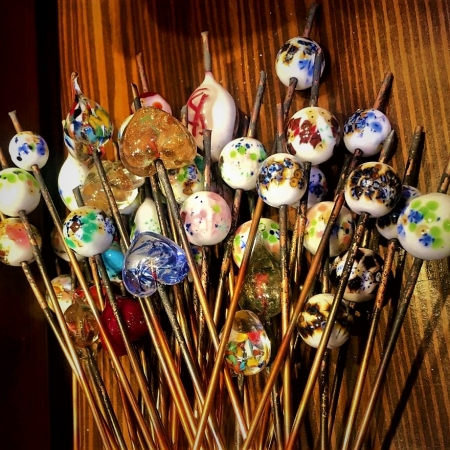CRAZY FOR VENETIAN BEADS!
“Crazy for Venetian beads!” tour reminds you how tiny beads are and yet how important they have been in the history of humanity. They were one of the earliest forms of decoration and adornment known to mankind, as bead making dates from 30.000 years ago.
In the world, the earliest beads were bone, shell, or stone made, while in Venice the only material ever used was glass, from the very beginning.
In the Middle Ages, the commercial success of Murano glass supported the production of bead rosaries.
Ancient records mention several barrels containing beads for religious purposes exported from Venice in 1338.
In those days glass masters dripped hot glass in a wooden rod covered with special non-stick paste.
In later centuries the “lamp glass” technique developed, consisting of cylindrical canes that could be cut and refined by grinding or heating.
This revolutionary process led to a large production of pieces made by hundreds of artisans. In 1672 the new Guild of Bead Makers was officially established in Venice.
The innovation in lampworking method continued throughout the 18th century, until the fall of the Republic in 1797. New centers for glass bead production flourished in Europe, especially in Bohemia, such as Swarovski crystals.
After the reunification of Italy, Venice managed to regain some of its past fame, and specialists from Salviati, Barovier, Toso, and Moretti families led the revival of this refined handicraft.
So what about “Crazy for Venetian beads!“? First reason: to please women on their trip to Venice!
Then, we care for truly Venetian souvenirs, and we do not like the fake ones, the imported stuff that you can see as you walk in the narrow alleys of the city.
Learn the processes of bead making, the variety of shapes and colors, the beauty of shiny necklaces, bracelets, brooches, and much more…
HIGHLIGHTS
- Full immersion in the world of Venetian beads
- Visit a Glass Bead Factory in Murano
- Meet a bead master in his workshop
MORE ABOUT
THIS TOUR
It seems that Marco Polo, returning home from his travel to China, imported Asian precious stones as well.
Skilled local artisans did not hesitate to reproduce them in glass, as everybody used to do with different goods.
Venice handicrafts always borrowed techniques, patterns, and new ideas from the commodities shipped to Venice from all over the world, which increased enormously the variety of items produced on the spot.
Here is a short list of the major types of Murano beads:
DRESS CODE AND ADVICE
- No dress code required for this tour.
COST
- This tour lasts three hours and costs 650 euros, with return trip included (not per person).
- Max 6 people, only private parties. no shared tours.
- If you are a larger group please inquire by sending us an email.
- Transportation included.

